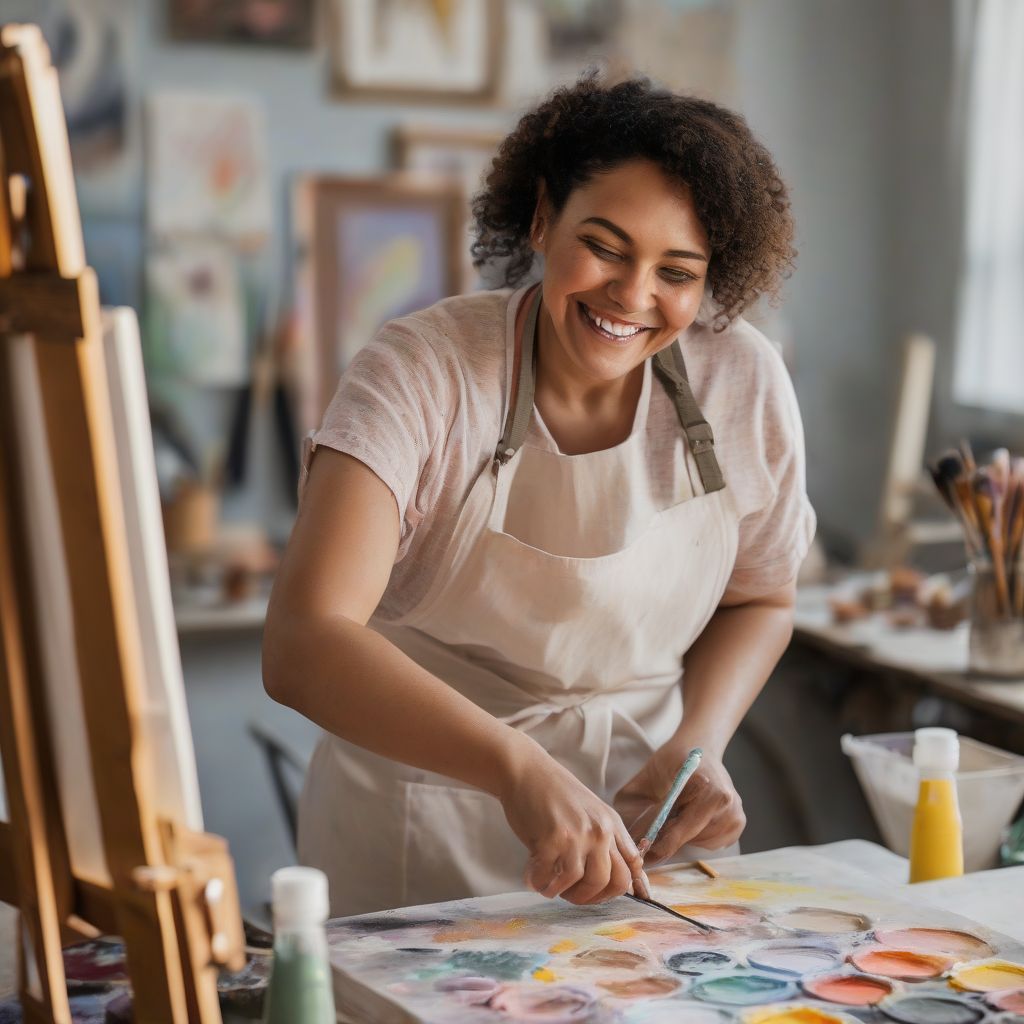Have you ever watched an artist blend vibrant pastel strokes into a breathtaking sunset or witnessed soft pastels transform a blank page into a lifelike portrait? It feels almost magical, doesn’t it? The good news is, creating art with pastels isn’t magic; it’s a skill you can learn! Whether you’re a complete beginner or have dabbled in other mediums, this guide will equip you with the techniques and tips to confidently create your own pastel masterpieces.
Understanding Pastel Basics
Before we delve into the techniques, let’s get familiar with the tools of the trade. Pastels come in a variety of forms, each offering unique characteristics:
- Soft Pastels: These are the most common type, known for their vibrant pigments and smooth blending capabilities. Perfect for beginners, they allow for beautiful gradations and layering.
- Hard Pastels: As the name suggests, these have a harder consistency, making them ideal for fine details, lines, and sketching.
- Pastel Pencils: Combining the precision of a pencil with the richness of pastels, these are excellent for intricate work and adding finishing touches.
- Pan Pastels: These come in pans, resembling eyeshadows, and are applied with sponges or sofft tools. They offer excellent coverage and are ideal for large areas.
Choosing the right paper is equally crucial. Textured paper, specifically designed for pastels, is your best bet. Its tooth grips the pastel particles, allowing for multiple layers and rich color saturation.
 Pastel Art Supplies
Pastel Art Supplies
[amazon bestseller=”pastel art supplies”]
Mastering Essential Pastel Techniques
Ready to unleash your creativity? Let’s explore some fundamental pastel techniques:
1. Blending: The Art of Smooth Transitions
Blending is the heart and soul of pastel work. It allows you to seamlessly blend colors, creating smooth gradients and lifelike effects. You can use your fingers (wear gloves to protect your skin and keep the colors clean), blending tools like tortillons or even cotton swabs for this purpose. Experiment with different blending tools to discover what suits your style.
2. Layering: Building Depth and Dimension
One of the beautiful aspects of pastels is the ability to layer colors, creating depth and dimension in your artwork. Start with a light base color and gradually build up layers of different hues, blending as you go. This technique is particularly effective for portraying shadows, highlights, and subtle color variations.
3. Scumbling: Adding Texture and Interest
Scumbling involves lightly dragging one pastel color over another, allowing the underlying color to peek through. It’s a fantastic technique for adding texture, depth, and a sense of vibrancy to your artwork. Experiment with different pressures and strokes to achieve various effects.
4. Stippling: Creating Dots of Impression
Stippling, as the name suggests, involves creating dots with your pastel to build up color and texture. This technique is excellent for creating an impressionistic feel or adding subtle details to your work. You can vary the size and density of your dots to achieve different effects.
5. Feathering: Soft Edges and Subtle Transitions
Feathering is a gentle technique used to create soft edges, subtle transitions, and delicate details. It involves using the side of your pastel to apply light strokes, gradually fading out the color as you go. This is particularly useful for depicting hair, clouds, or soft backgrounds.
Tips for Pastel Success
Here are some additional tips to elevate your pastel artistry:
- Start Light: Begin your pastel drawings with light pressure and gradually build up the intensity as needed. This allows for greater control and prevents the paper from becoming oversaturated too quickly.
- Experiment with Papers: Don’t be afraid to experiment with different pastel papers to find what you enjoy working with the most. Each paper has a unique texture and tooth that can influence the final look of your artwork.
- Keep Your Pastels Clean: To prevent muddiness, regularly clean your pastels by gently rubbing them on a soft cloth or paper towel. This helps to remove any excess pastel dust.
- Protect Your Work: Once finished, protect your pastel artwork from smudging and fading by using a fixative spray specifically designed for pastels. Always spray lightly in a well-ventilated area.
- Embrace the Process: The beauty of art lies in the journey, not just the destination. Don’t be afraid to experiment, make mistakes, and learn from them. Each stroke brings you closer to finding your unique artistic voice.
From Beginner to Confident Artist: Resources for Continued Learning
The world of pastel art is vast and full of possibilities. Here are some resources to help you continue exploring and refining your skills:
- Online Tutorials: Websites like YouTube and Skillshare offer a plethora of free and paid pastel tutorials for all skill levels.
- Art Books: Invest in some comprehensive pastel art books to deepen your understanding of techniques, color theory, and composition.
- Local Art Classes: Joining a local art class or workshop provides an excellent opportunity to learn from experienced pastel artists, receive personalized feedback, and connect with fellow art enthusiasts.
 Woman Creating Pastel Art
Woman Creating Pastel Art
Conclusion: Embrace the Joy of Pastel Art
Creating art with pastels is a rewarding experience that allows you to express your creativity while enjoying the process. Remember, there are no strict rules in art, only guidelines to help you along the way. So, gather your materials, embrace the techniques, and let your imagination run wild on the canvas. Whether you’re captivated by the vibrant hues of a landscape or the delicate features of a portrait, pastels offer a world of artistic possibilities waiting to be explored.
What aspect of pastel art excites you the most? Share your thoughts and creative aspirations in the comments below! And don’t forget to share this article with fellow art enthusiasts who might be inspired to embark on their own pastel journey.
